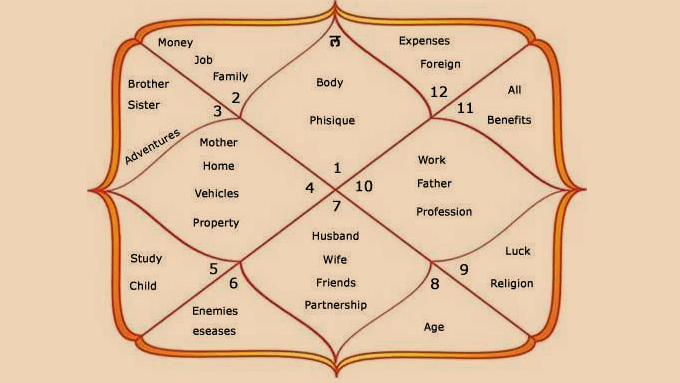Understanding Houses in a Kundli

Need Guidance On Your Problems?
Consult With The Best Online Astrologers
In astrology, understanding houses in a Kundli is crucial, just like understanding the planets. In this guide, we'll explore what houses are and why they are important for reading a Kundli.
A Kundli, or horoscope, shows where the planets were at the time of your birth. It's divided into 12 sections called houses. Each house has its own meaning and tells us about different aspects of life. For example, the fifth house is about children, while the first house represents yourself.
Think of a Kundli as a square chart divided into 12 triangles. Each triangle is a house that provides specific information. Here’s a simple way to remember the basics:
- First House: Self and personality
- Second House: Siblings and family
- Fifth House: Children and creativity
To get accurate readings, it's essential to understand both the planets and the houses in your Kundli, as they work together to give a complete picture. If you’re new to Kundli reading, seeing a sample chart can help you understand how these houses are arranged and what they mean.
Understanding Houses in a Kundli
To get a clear picture of houses in a Kundli (birth chart), think of the chart as divided into 12 sections, like a pizza cut into 12 slices. Each slice is called a house.
Here’s a simple guide to understanding these houses:
- Finding the Houses:
- Look at your Kundli chart.
- To locate the first house, find the number 11 and count anti-clockwise.
- The house next to it is the second house, and so on, moving anti-clockwise.
- Ascendant Sign:
- The ascendant sign is the zodiac sign that was in the first house at the time of your birth.
- For example, if Aquarius is in the first house, then Aquarius is your ascendant sign.
- Meaning of Each House:
- First House: Represents yourself, your personality.
- Second House: Deals with wealth and family.
- Third House: Relates to siblings, courage, and bravery.
- Fourth House: Concerns your mother and overall happiness.
- Fifth House: Focuses on children and knowledge.
- Sixth House: Covers enemies, debts, and health issues.
- Seventh House: Represents marriage and partnerships.
- Eighth House: Linked to longevity and life span.
- Ninth House: Associated with luck, your father, and religion.
- Tenth House: Concerns your career or profession.
- Eleventh House: Deals with income and gains.
- Twelfth House: Represents expenses and losses.
- Lord of Each House:
- Each house has a planet that is considered its lord. This planet influences the house's effects.
- For example, if Saturn is the lord of the tenth house (career), it might mean you’ll face challenges but will also need to work hard for success.
- If another planet, like the Sun or Mars, enters the tenth house, it could affect how Saturn’s influence plays out, possibly bringing changes or challenges to your career.
Understanding these basics will help you interpret your Kundli more effectively, making it easier to see how different aspects of your life are influenced by the positions of planets in these houses.
How to Find the Lord of Each House in Your Kundli
To find out which planet rules each house in your Kundli, follow these simple steps:
- Identify the Signs in Each House:
- Look at the numbers in your Kundli chart. These numbers represent zodiac signs. For example, if "11" is in the first house, it means the sign of Aquarius is in that house.
- Similarly, if "12" is in the second house, it means the sign of Pisces is there.
- Know the Lords of the Zodiac Signs:
- Each zodiac sign has a ruling planet:
- Aquarius is ruled by Saturn.
- Pisces is ruled by Jupiter.
- Each zodiac sign has a ruling planet:
- Determine the Lord of Each House:
- For the first house with Aquarius (number 11), the lord of the first house is Saturn.
- For the second house with Pisces (number 12), the lord of the second house is Jupiter.
Summary
Now you know how to find out which planet rules each house in your Kundli. Combine this knowledge with what you learned in previous lessons to better understand and read your Kundli.



